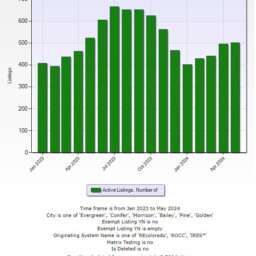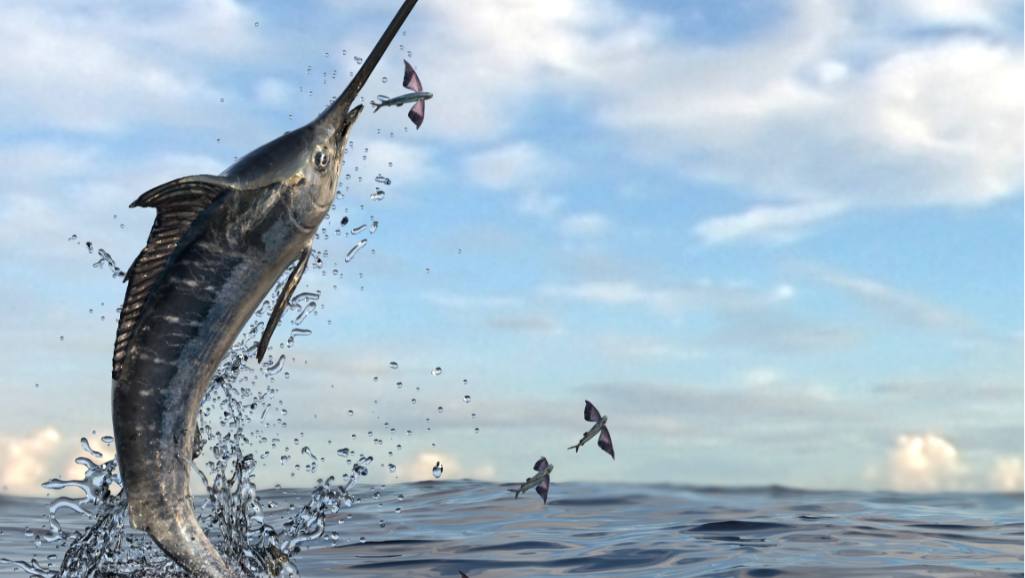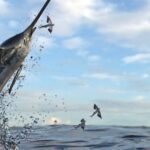Types of Fish You Will Catch in Southwest Florida
Discover the diverse and exciting world of fishing in Southwest Florida. From Snook to Tarpon, learn about the types of fish you can catch in this angler’s paradise.
Introduction: A Fishing Paradise in Southwest Florida
Southwest Florida, known for its crystal-clear waters and abundant marine life, is a paradise for anglers. This region, stretching from the Tampa Bay area down to the Ten Thousand Islands, offers a unique fishing experience characterized by a rich variety of fish species, beautiful landscapes, and year-round fishing opportunities.
Snook: The Prize of Inshore Fishing
Habitat and Seasonal Patterns
Snook, a highly prized game fish, thrives in the mangrove-lined estuaries and backcountry waters of Southwest Florida. These fish are known for their powerful runs and spectacular fighting ability. Understanding their seasonal movements, particularly during the spawning season in summer, is key to successful snook fishing.
Techniques and Baits for Snook Fishing
Anglers targeting snook often use live bait like pilchards or shrimp, but artificial lures can also be effective. Techniques vary from casting under docks and along mangrove edges to sight fishing in shallow waters. The thrill of hooking a big snook is an unforgettable experience for any angler.
Redfish: The Coastal Battler
Identifying Redfish Habitats
Redfish, or red drum, are another popular target in Southwest Florida. These strong fighters are often found in shallow grass flats, around oyster bars, and in tidal creeks. Spotting their distinctive tails when they are feeding in shallow water is a tell-tale sign for anglers.
Effective Strategies for Catching Redfish
Live bait like crabs and mullet work well for redfish, as do a variety of artificial lures. Sight fishing and casting to tailing redfish require stealth and precision, making it a challenging but rewarding experience.
Tarpon: The Silver King of Florida
Understanding Tarpon Migration and Behavior
Tarpon, known as the Silver King, are among the most sought-after game fish in the world. Southwest Florida is a hotspot for tarpon fishing, especially during their annual migration in the spring and early summer. These majestic fish are known for their acrobatic jumps and sheer strength.
Best Practices for Tarpon Fishing
Successful tarpon fishing often involves live baiting with mullet or crabs, though artificial lures can also be effective. The challenge lies in hooking and landing these powerful fish, which can reach sizes of over 200 pounds.
Spotted Seatrout: The Inshore Favorite
Where to Find Seatrout in Southwest Florida
Spotted seatrout are a staple in the inshore waters of Southwest Florida. These fish prefer grassy flats, drop-offs, and sandy bottoms, where they feed on small fish and crustaceans. Winter months often yield the largest seatrout, making them a year-round target for anglers.
Tips for Successful Seatrout Fishing
Live shrimp and small baitfish are excellent choices for seatrout. Soft plastic lures and topwater plugs can also be effective, especially during the early morning or late evening. Seatrout are known for their delicate bites, so a sensitive approach is crucial.
Mangrove Snapper: The Stealthy Opportunist
Mangrove Snapper Habitats and Habits
Mangrove snapper, smaller but feisty, are abundant around the mangrove roots and structures in Southwest Florida. They are opportunistic feeders, often snatching up baits intended for other species.
Techniques for Targeting Mangrove Snapper
Small live baits like shrimp or cut bait work well for mangrove snapper. Light tackle and stealthy approaches are key, as these fish can be quite wary. Fishing near structures, such as docks or fallen trees, often yields the best results.
Grouper: The Deep Water Challenge
Various Grouper Species in Southwest Florida
Grouper fishing is a mainstay in Southwest Florida, with several species like Gag, Red, and Black Grouper inhabiting deeper offshore waters. These bottom dwellers are known for their strength and the delicious taste of their meat.
Techniques and Locations for Grouper Fishing
Effective grouper fishing often involves heavy tackle and baits like squid, sardines, or live pinfish, dropped to the rocky bottom or near wrecks and reefs. Anglers need to be prepared for a tough fight as grouper are known for their initial powerful runs to hide in their rocky lairs.
Spanish Mackerel: The Speedy Predator
Characteristics and Migration Patterns
Spanish Mackerel, fast and agile predators, are abundant in Southwest Florida, especially during their spring and fall migrations. These sleek fish are known for their speed and are a favorite among sport fishermen.
Effective Mackerel Fishing Methods
Trolling with small spoons or live baiting with pilchards are common techniques for catching Spanish Mackerel. Anglers often find success fishing near schools of baitfish, where mackerels are actively feeding.
Sheepshead: The Striped Bandit
Unique Features of Sheepshead
Sheepshead, with their distinctive black and white stripes, are a common catch around piers, jetties, and oyster beds. Known for their strong teeth, they feed primarily on crustaceans.
Tips for Catching Sheepshead
Fiddler crabs, shrimp, and sand fleas make excellent bait for Sheepshead. Patience and a delicate touch are required as these fish have a notorious ‘soft bite’, making them a fun challenge for anglers of all levels.
Pompano: The Tasty Shoreline Runner
Understanding Pompano Behavior
Pompano, a highly prized fish for its delicious taste, is commonly found in the surf and near inlets. These fast-swimming fish are often caught along sandy beaches and grass flats.
Best Baits and Techniques for Pompano
Small crabs, shrimp, and sand fleas are effective baits for Pompano. Jigging with small lures near the bottom can also yield good results, especially when fishing in channels and around sandbars.
Cobia: The Wandering Fighter
Identifying Cobia in Southwest Florida
Cobia, a large and curious fish, are often spotted near the surface, around buoys, and even following larger marine animals. Their inquisitive nature makes them an exciting target for sight fishing.
Effective Cobia Fishing Strategies
Live bait such as crabs or eels can be very effective for Cobia. Sight casting to cruising Cobia requires accuracy and quick reaction, as these fish can be quite elusive once hooked.
Shark Fishing in Southwest Florida
Common Shark Species and Their Habitats
Shark fishing adds an element of adventure and challenge. Species like Bull Sharks, Blacktips, and Hammerheads are common in these waters. Safety and responsible fishing practices are paramount when targeting these apex predators.
Safety and Regulations in Shark Fishing
Understanding local regulations and practicing catch-and-release with sharks is crucial. Using appropriate tackle and handling sharks with care ensures a safe and ethical fishing experience.
Fly Fishing in Southwest Florida
Target Species for Fly Fishing
Fly fishing in Southwest Florida offers a unique challenge, targeting species like Snook, Redfish, and Tarpon. The shallow flats and backcountry waters provide excellent opportunities for sight casting.
Essential Fly Fishing Techniques and Gear
Choosing the right fly rod, reel, and line is crucial. Presenting the fly accurately and understanding the feeding habits of the target species are key to success in fly fishing.
Saltwater Fishing Regulations and Conservation
Understanding Local Fishing Laws
Familiarizing oneself with the local fishing regulations, including size and bag limits, is essential for sustainable fishing. Regulations are in place to protect fish populations and ensure future generations can enjoy the sport.
Importance of Sustainable Fishing Practices
Practicing catch and release, especially for species like Tarpon and certain Sharks, contributes to conservation efforts. Being a responsible angler also means respecting the marine environment and other users of the waterways.
Choosing the Right Fishing Gear
Essential Equipment for Various Fish Types
Selecting the right gear for the specific type of fish you are targeting is crucial. This includes choosing the appropriate rod, reel, line, and bait.
Recommendations for Beginners and Advanced Anglers
For beginners, starting with basic tackle and gradually advancing to more specialized gear is advisable. Experienced anglers might focus on refining their technique with specialized equipment tailored to specific fish species.
Hiring a Fishing Guide: Pros and Cons
Benefits of Fishing with a Guide
A local fishing guide can provide invaluable knowledge about the local waters, fish behaviors, and effective techniques. This can be especially beneficial for anglers new to the area or those targeting a new species.
How to Choose the Right Fishing Guide
When selecting a fishing guide, consider their experience, knowledge of the area, and reviews from previous clients. A good guide can make a significant difference in the success and enjoyment of your fishing trip.
Preparing Your Catch: From Hook to Table
Cleaning and Cooking Different Fish Species
Knowing how to properly clean and prepare your catch is part of the fishing experience. Different fish species require different cleaning and cooking methods to best enjoy their flavors.
Recipes and Tips for Fresh Fish
Experimenting with local recipes and cooking methods can add to the enjoyment of your catch. Grilling, frying, and baking are popular ways to prepare fresh fish, and there are endless recipes to explore.
FAQs about Fishing in Southwest Florida
- What is the best time of year to fish in Southwest Florida?
- Do I need a license for saltwater fishing in this region?
- What are some common baitfish found in Southwest Florida?
- Can I catch and keep any size or species of fish?
- What are some catch-and-release best practices?
- Are there any specific regulations for shark fishing in this area?
FAQs about Fishing in Southwest Florida
What is the best time of year to fish in Southwest Florida?
The best time of year to fish in Southwest Florida largely depends on the type of fish you’re targeting. Generally, the region offers year-round fishing opportunities due to its warm climate and diverse marine habitats. For example, if you’re keen on catching Tarpon, the prime time is during their migration in late spring and early summer, especially from April to June. This is when these majestic fish are most abundant and active, offering anglers the chance to experience some of the most exhilarating fishing in the world.
On the other hand, winter months, particularly from December to February, are excellent for targeting Spotted Seatrout and Sheepshead. The cooler waters drive these species to more predictable locations, making them easier to find and catch. Redfish and Snook can be caught throughout the year, but they are particularly active during the fall season when they are feeding heavily in preparation for winter. Understanding these seasonal patterns is key to planning a successful fishing trip in Southwest Florida.
Do I need a license for saltwater fishing in this region?
Yes, a fishing license is required for saltwater fishing in Southwest Florida. Both residents and non-residents need to obtain a license to fish legally in the state’s coastal waters. The Florida Fish and Wildlife Conservation Commission (FWC) offers various types of licenses, including short-term, annual, and lifetime licenses, depending on your needs. There are exceptions, however, such as for anglers under the age of 16, residents over 65 years old, or those fishing from a licensed pier. It’s important to stay informed about the latest regulations and exemptions by checking with the FWC. Compliance with licensing requirements not only ensures a hassle-free fishing experience but also contributes to conservation efforts and the management of Florida’s fish populations.
What are some common baitfish found in Southwest Florida?
Southwest Florida’s waters are teeming with a variety of baitfish, which are crucial for successful fishing in the region. Some of the most common baitfish include Pilchards (also known as Whitebait), Threadfin Herring, and Pinfish. Pilchards are a favorite among inshore anglers, particularly for targeting species like Snook, Redfish, and Tarpon. They are often found in large schools and can be caught using cast nets. Threadfin Herring, with their distinctive thread-like fin, are another popular choice, especially for offshore fishing. They are effective for attracting larger species like Grouper and King Mackerel.
Pinfish are versatile bait, suitable for both inshore and offshore fishing. They are hardy and can survive well in a baitwell, making them a reliable option throughout the day. Additionally, live shrimp are a staple bait in the region and are highly effective for a wide range of species, from Trout to Sheepshead. Using local baitfish not only increases your chances of a successful catch but also aligns with the natural diet of the target fish, making your fishing experience more sustainable and environmentally friendly.
Can I catch and keep any size or species of fish?
In Southwest Florida, as in all fishing destinations, there are specific regulations governing the size and species of fish that can be legally caught and kept. These regulations are put in place by the Florida Fish and Wildlife Conservation Commission (FWC) to ensure sustainable fishing practices and the long-term health of fish populations. Each species has its own set of rules regarding size limits, bag limits (the number of fish you can keep), and sometimes even gear restrictions.
For instance, there are minimum size limits for popular species like Snook, Redfish, and Spotted Seatrout to ensure that juvenile fish have a chance to mature and reproduce before being harvested. Some species may also have closed seasons during their spawning period to protect them at a critical time in their life cycle. It’s crucial for anglers to stay informed about the current regulations, which can change based on ongoing conservation needs and scientific assessments. Adhering to these rules not only ensures a sustainable future for fishing but also helps maintain the balance of the region’s marine ecosystems.
What are some catch-and-release best practices?
Catch-and-release fishing, when done correctly, is a vital practice for conservation and maintaining healthy fish populations. In Southwest Florida, employing best practices for catch-and-release ensures that released fish have the best chance of survival. Firstly, minimize the time the fish is out of water. Prepare your camera and tools in advance, and handle the fish as little as possible. When handling the fish, use wet hands or a wet cloth to avoid removing their protective slime coating.
Using barbless hooks or crimping the barbs on your hooks makes unhooking easier and less traumatic for the fish. If the fish is deeply hooked, it’s often better to cut the line as close to the hook as possible rather than trying to remove it. Reviving the fish before release is also crucial, especially after a strenuous fight. Gently hold the fish in the water, moving it back and forth to encourage water flow over its gills until it swims off strongly on its own. By practicing these catch-and-release techniques, anglers contribute to the sustainability of the fisheries and the overall health of the aquatic ecosystem.
Are there any specific regulations for shark fishing in this area?
Shark fishing in Southwest Florida is subject to specific regulations to ensure both the safety of anglers and the conservation of shark populations. The Florida Fish and Wildlife Conservation Commission (FWC) has implemented rules regarding the species of sharks that can be legally caught and retained. Some species are protected and must be released if caught. For those species that can be legally harvested, there are size limits and bag limits in place.
Furthermore, the FWC requires anglers targeting sharks from shore to have a Shore-based Shark Fishing Permit, which is free and comes with an educational component to ensure anglers understand best practices for safe and sustainable shark fishing. It’s also important to use appropriate tackle that minimizes the fight time and stress on the shark, and to release the shark as quickly and safely as possible if it’s not a legal species or size. Since regulations can change, it’s crucial for anglers to stay updated on the current rules before going shark fishing in Southwest Florida. This not only ensures a safe and enjoyable fishing experience but also aids in the conservation of these magnificent marine predators.
The Ultimate Angling Experience
Fishing in Southwest Florida offers an unparalleled experience for anglers of all levels. From the thrill of hooking a Tarpon to the satisfaction of cooking your own catch, the region promises diverse opportunities and memorable adventures. So, grab your rod and reel, and immerse yourself in the rich and vibrant marine life of Southwest Florida.
Bill Brown
It's Nice to Share

























































































Comment, Write a Blog Post, Create Groups, Get Seen!
Comments, Opinions and Facts Go Here...👇
Anglers and fishing enthusiasts know the Southwest Florida Gulf coast is a treasure trove for an exciting fishing experience. With the warm waters off Marco Island, Fort Myers, Cape Coral, and Naples, the Gulf of Mexico serves as a fertile fishing ground offering a variety of species to challenge your angling skills. Whether you're a resident with a passion for fishing or a visitor seeking the thrill of the catch, here’s a definitive guide to the 20 fish you can reel in from this angler's paradise.
## 1. Snook
*Explosive and elusive, Snook is a prize catch for any angler. These fighters are often found around mangroves and estuary systems.*
## 2. Redfish (Red Drum)
*A favorite for sport fishing, Redfish thrive in shallow waters and are known for their signature spot near the tail.*
## 3. Spotted Seatrout
*Spotted Seatrout are abundant and provide an excellent inshore fishing opportunity. Their speckled backs make a beautiful trophy.*
## 4. Tarpon
*The "Silver King" of the Gulf, Tarpon are renowned for their spectacular leaps and mighty fight when hooked.*
## 5. Permit
*With their distinct dorsal fins, Permit are a challenge to catch, offering an unforgettable fishing experience.*
## 6. Grouper
*A variety of Grouper species inhabit the deeper waters, providing both a tough battle and a delicious meal.*
## 7. King Mackerel (Kingfish)
*King Mackerel are fast swimmers and their long runs are sure to test your tackle's mettle.*
## 8. Spanish Mackerel
*Smaller than their King relatives, Spanish Mackerel are equally feisty and are often found in schools.*
## 9. Cobia
*Cobia are curious fish, often found near structures, and are respected for their strength and tenacity.*
## 10. Pompano
*Pompano are a delight to catch, especially for their acrobatics and their value on the dinner plate.*
## 11. Mahi-Mahi (Dolphinfish)
*Recognizable by their dazzling colors, Mahi-Mahi are offshore favorites that provide both sport and taste.*
## 12. Shark (Various Species)
*From Blacktips to Hammerheads, the waters here offer an adrenaline-packed shark fishing adventure.*
## 13. Sheepshead
*With their striped pattern and strong teeth designed for crushing shells, Sheepshead are common around piers and jetties.*
## 14. Mangrove Snapper
*Mangrove Snapper are smart and selective, demanding a careful approach from anglers.*
## 15. Flounder
*Always a fun catch, Flounder put up a modest fight but reward with their excellent flavor.*
## 16. Tripletail
*Known for hanging around floating objects, Tripletail is a peculiar but rewarding catch.*
## 17. Black Drum
*Larger cousins of Redfish, Black Drum are found in many of the same habitats and can grow quite large.*
## 18. Amberjack
*Often referred to as the "reef donkeys," Amberjack offer a robust challenge due to their size and strength.*
## 19. Jack Crevalle
*These powerful fish are often found in schools and are known for their long, powerful runs.*
## 20. Barracuda
*With their torpedo-shaped bodies and razor-sharp teeth, Barracudas are thrilling to catch and are known for their high-speed pursuits.*
Whether you're casting off from a serene beach or heading into the deeper Gulf waters, Southwest Florida's rich marine life guarantees an enriching fishing experience that fulfills the promise of the catch. Remember to respect local regulations, practice sustainable fishing, and always embrace the spirit of sportsmanship on the open water. Now, ready your lines – these waters are awaiting your bait!